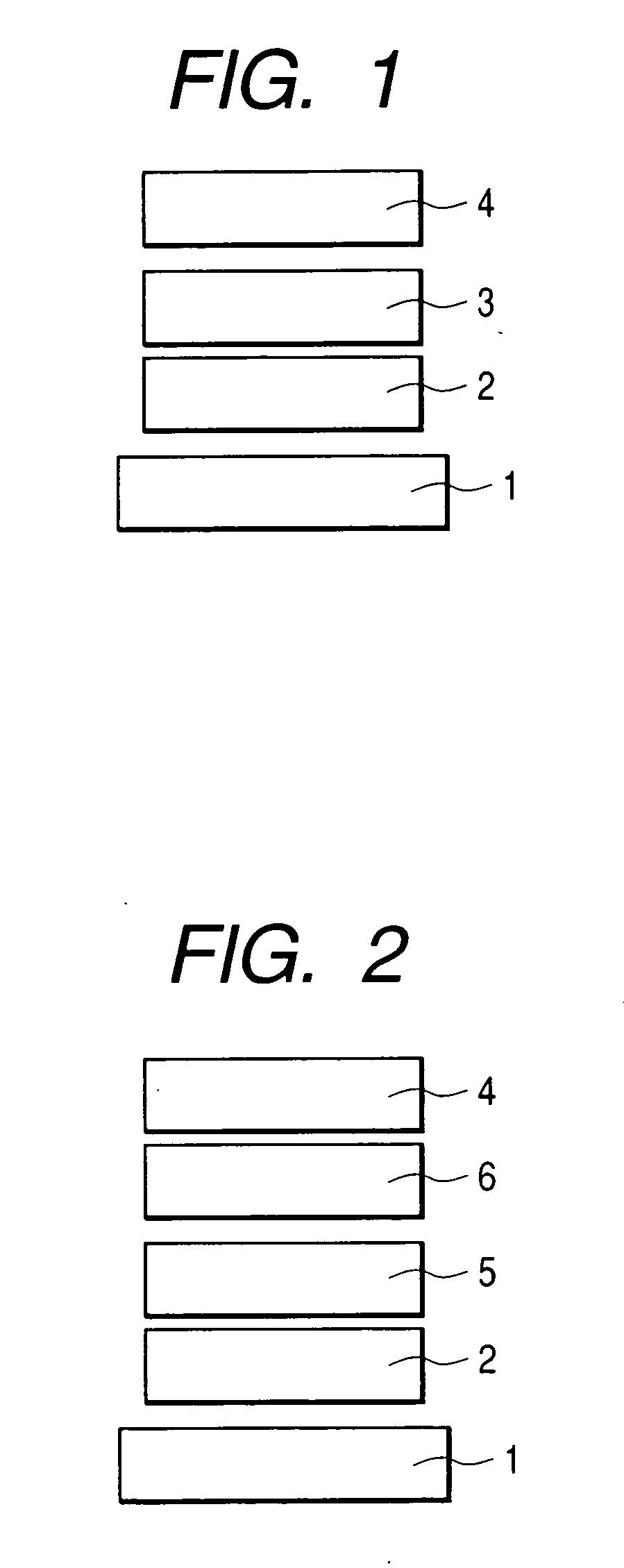Condensed polycyclic compound and organic light-emitting device using the same
a technology of condensed polycyclic compounds and light-emitting devices, which is applied in the direction of solid-state devices, discharge tubes/lamp details, natural mineral layered products, etc., can solve the problems of insufficient satisfaction, deterioration due, and inability to meet the requirements of durability, and achieves high luminance, easy production, and high efficiency
- Summary
- Abstract
- Description
- Claims
- Application Information
AI Technical Summary
Benefits of technology
Problems solved by technology
Method used
Image
Examples
examples
[0064] The present invention will now be described in detail with reference to examples, but the present invention is not limited to them.
example of synthesis 1
Synthesis of the Illustrated Compounds No. 1 and No. 11
[0065]
[0066] To a three-necked flask of 500 ml, 1.4 g (2.54 mmol) of hexabromobenzene [1], 6.0 g (25.4 mmol) of 9,9-dimethylfluorene-2-boronic acid [2], 160 ml of toluene and 80 ml of ethanol were charged and an aqueous solution of 30 g of sodium carbonate / 150 ml of water was dropped under stirring at room temperature in a nitrogen atmosphere, and then 0.9 g (0.78 mmol) of tetrakis(triphenylphosphine)palladium (0) was added. After stirring at room temperature for 30 minutes, the mixture was raised to a temperature of 77° C. and stirred for 20 hours. After the reaction was completed, the organic layer was extracted with chloroform, dried with anhydrous sodium sulfate and purified with a silica gel column (hexane+toluene mixed developing solvent), obtaining 0.44 g (yield of 17%) of the illustrated compound No. 1 (white crystal) and 1.3 g (yield of 42%) of No. 11 (white crystal).
example of synthesis 2
Synthesis of the Illustrated Compound No. 2
[0067]
[0068] To a three-necked flask of 300 ml, 0.5 g (1.03 mmol) of 2,3,4,5,6-pentabromotoluene [1], 2.5 g (10.3 mmol) of 9,9-dimethylfluorene-2-boronic acid [2], 100 ml of toluene and 50 ml of ethanol were charged and an aqueous solution of 10 g of sodium carbonate / 50 ml of water was dropped under stirring at room temperature in a nitrogen atmosphere, and then 0.3 g (0.26 mmol) of tetrakis(triphenylphosphine)palladium (0) was added. After stirring at room temperature for 30 minutes, the mixture was raised to a temperature of 7° C. and stirred for 20 hours. After the reaction, the organic layer was extracted with chloroform before dried with anhydrous sodium sulfate and purified with a silica gel column (hexane+toluene mixed developing solvent), obtaining 0.54 g (yield of 55%) of the illustrated compound No. 2 (white crystal).
PUM
| Property | Measurement | Unit |
|---|---|---|
| Electric potential / voltage | aaaaa | aaaaa |
| Electric potential / voltage | aaaaa | aaaaa |
| Electric potential / voltage | aaaaa | aaaaa |
Abstract
Description
Claims
Application Information
 Login to View More
Login to View More - R&D
- Intellectual Property
- Life Sciences
- Materials
- Tech Scout
- Unparalleled Data Quality
- Higher Quality Content
- 60% Fewer Hallucinations
Browse by: Latest US Patents, China's latest patents, Technical Efficacy Thesaurus, Application Domain, Technology Topic, Popular Technical Reports.
© 2025 PatSnap. All rights reserved.Legal|Privacy policy|Modern Slavery Act Transparency Statement|Sitemap|About US| Contact US: help@patsnap.com



